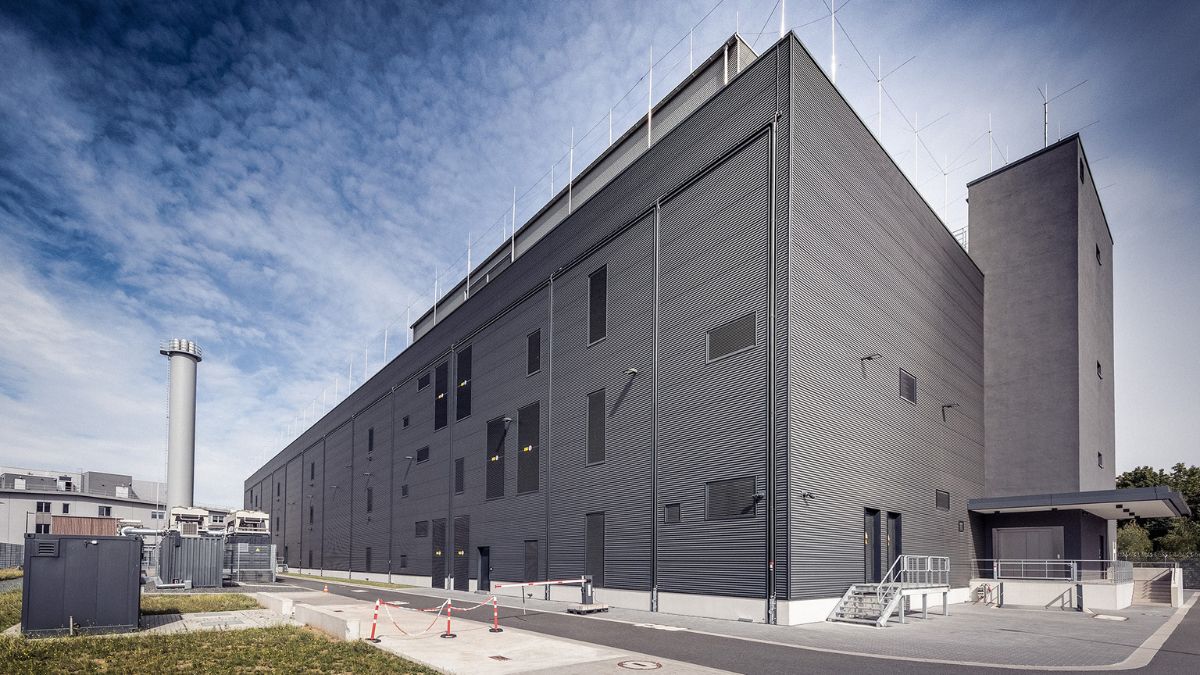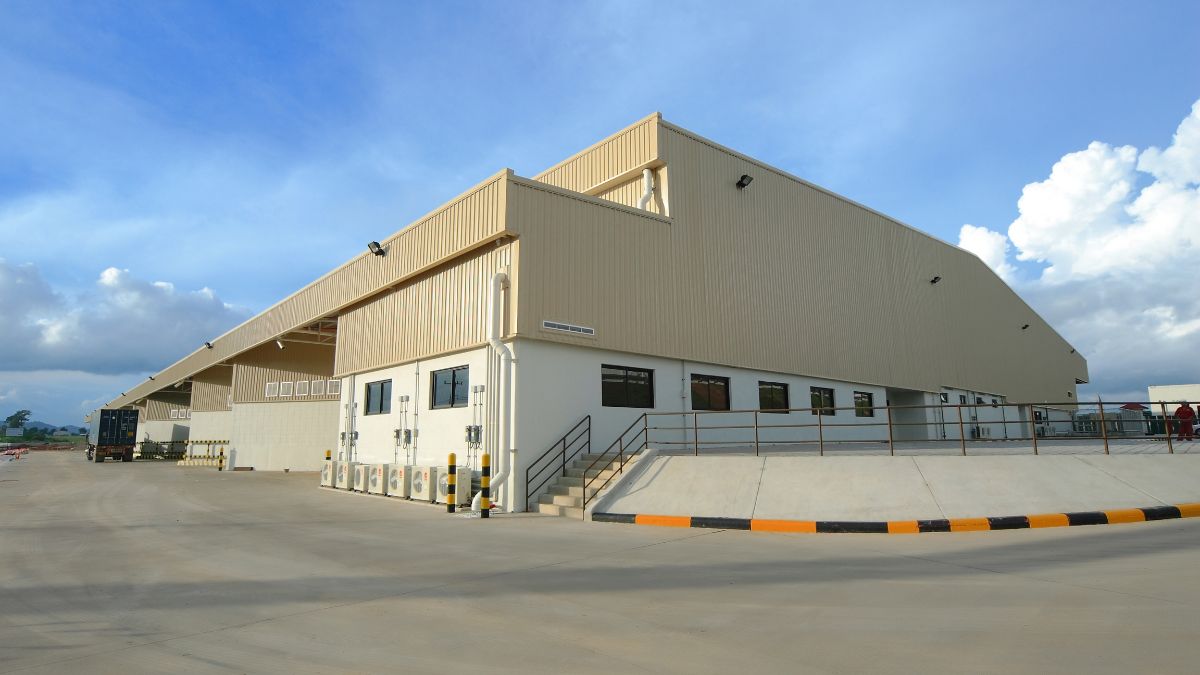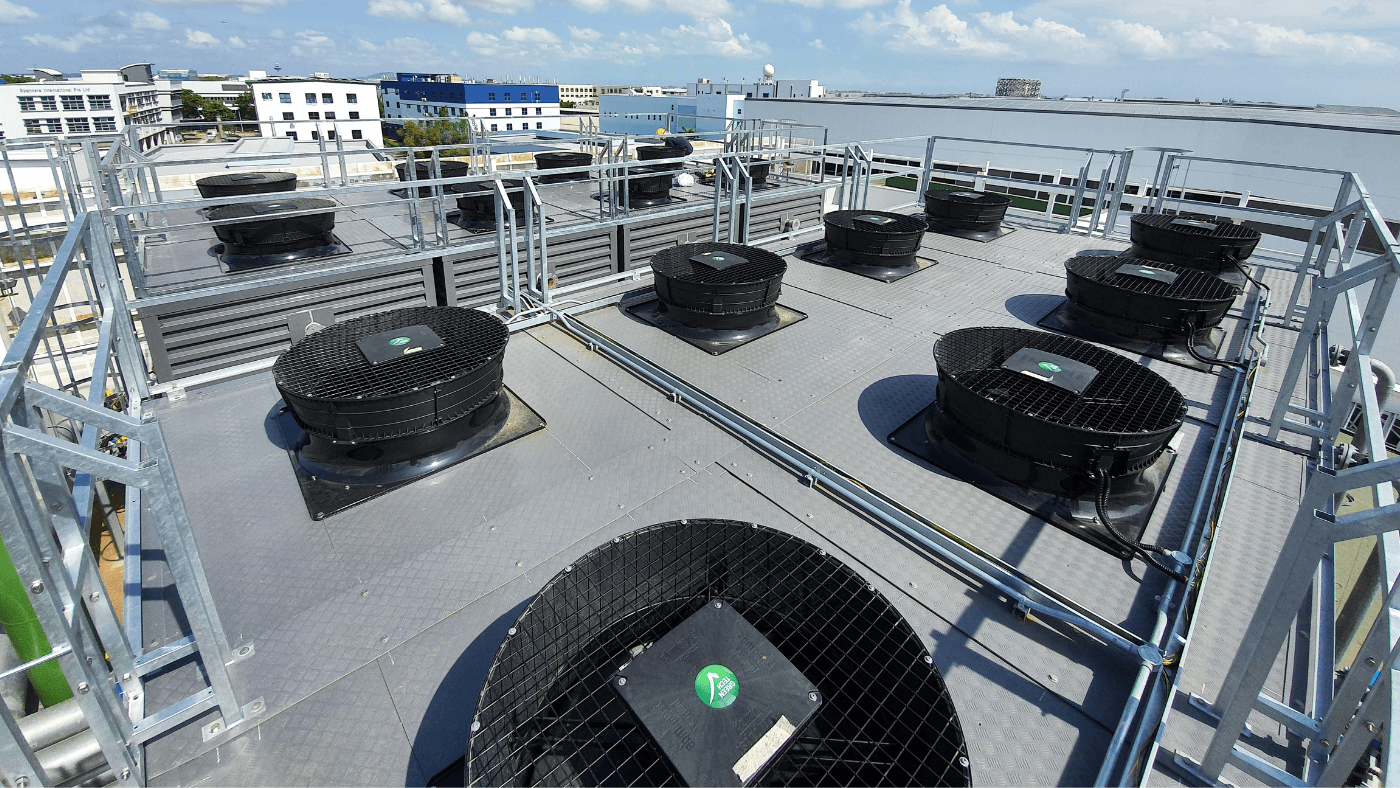Fan retrofit success story: Upgrading ventilation systems at ebm‑papst in Germany
ebm‑papst is modernizing the ventilation systems at its German locations with a retrofit, upgrading them to the latest generation of its own high-efficiency fans. This upgrade will significantly reduce the energy consumption of its HVAC systems. The company has executed three types of retrofits, each delivering notable energy savings:
- AC belt-driven to EC Centrifugal → Up to 50% in energy savings
- Generation 1 or 2 EC to Generation 3 EC → Up to 12% in energy savings
- EC Hyblade to EC AxiEco (a more advanced axial fan) → Up to 15% in energy savings
HVAC applications that were retrofitted include air handling units, condensers, heat exchangers and more.
The aforementioned benefits of EC fans for fan retrofits are just the tip of the iceberg. As ebm‑papst continues to innovate, our EC fans will be engineered with more smart and advanced features, enabling even further energy optimisation.
To dive in deeper to specific applications, please select one of the options below. If you do not see the HVAC application you hope to retrofit, we recommend contacting us directly.
Reasons to retrofit your fans
The direct benefits of retrofitting your fans are clear – less energy consumed equates to lower operational costs. However, there are several other less prominent benefits that merit discussion.
Scientists around the world agree that to prevent the most devastating impacts of climate change, human-caused carbon dioxide (CO2) emissions need to be reduced by roughly 45% relative to 2010 levels by 2030, eventually reaching net-zero by 2050. Since global temperature increases are linked to the cumulative CO2 released, any ongoing emissions will continue to drive warming, thereby exacerbating climate change effects.
One strategy to help achieve this target is the adoption of energy-efficient technologies, such as ebm‑papst's EC fans in buildings, which can play a role in lowering carbon emissions.
Source: Netzeroclimate.org
To lower energy usage and improve a building's efficiency, it's important to begin by assessing how energy is distributed throughout the facility. A 2018 report from the Building and Construction Authority (BCA) found that the primary consumers of energy in buildings are mechanical systems, including heating, ventilation, air conditioning (HVAC), lighting, and vertical transportation. In particular, cooling systems can use up to 60% of the total energy, while ventilation systems typically account for around 10%.
Within HVAC systems, various components such as pumps and fans contribute to energy use, with fans alone consuming up to 35% of the HVAC energy budget. Therefore, enhancing the efficiency of HVAC systems is a crucial approach to reducing overall energy consumption in buildings.
Systems such as air handling units (AHUs), condensers, cooling towers, and fan coil units work collectively to provide cooling and ventilation. A unifying factor among these systems is their reliance on fans to circulate air. In many older buildings in Singapore, these fans still operate using traditional Alternating Current (AC) motors. Replacing these conventional AC fans with more advanced Electronically Commutated (EC) fans offers a highly effective means of cutting energy consumption.
Sources: BCA and NCCS
A noticeable trend towards sustainable building practices is emerging in the region. Therefore, incorporating EC fans into your construction projects can significantly boost your chances of adhering to local government green building standards. Here are several examples from Southeast Asia:
Singapore: Singapore Green Building Masterplan, MEI Regime, Energy Conservation Act
Malaysia: Green Technology Masterplan 2017 - 2030
Thailand: Thailand Energy Efficiency Development Plan 2015-2036
Indonesia: Indonesia launches National Roadmap for Green Building Implementation
Vietnam: National Energy Efficiency Programme 2019 - 2030
Philippines: Republic Act 11285
Companies searching for office space are prioritizing sustainability alongside key factors like location and access to talent. Even in a sluggish leasing market, businesses are increasingly drawn to high-quality, low-carbon buildings and are often willing to pay more for eco-friendly spaces. According to JLL research, this "green premium" translates to higher rents—7.1% in North America, 9.9% in Asia Pacific, and 11.6% in London. Kirsty Draper from JLL highlights that office buildings contribute to corporate emissions, making sustainability a crucial element in real estate strategies as businesses work toward their environmental goals.
Source: JLL
Why choose ebm‑papst?
We aim to achieve climate-neutral production in the 2025/26 financial year. This means reaching climate neutrality in Scope 1 and 2. Sustainability has been at our core since our founding: each product we create must surpass its predecessor in economic and ecological performance, contributing to the sustainability of our customers' applications as well.
Since our pioneering integrated electronics before the millennium to today’s networked solutions, we deliver digital value to your applications. Through demand-driven operations, remote monitoring, predictive maintenance, and AI-driven buildings, we collaborate to find solutions that lower costs, save energy, and reduce emissions.
Founded on the belief in pioneering engines and groundbreaking EC technology, innovation has always driven our success. With substantial global investments in R&D, we continuously advance technology, enhancing our customers' applications and embodying technology leadership.
Our global presence ensures we offer rapid, customer-centric solutions while understanding local nuances and languages. By adapting our supply chains locally, we enhance responsiveness and reduce our CO2 footprint. This "local for local" approach allows us to meet customer needs swiftly and efficiently, contributing to a more sustainable future.
Download our fan retrofit info packet
This information packet serves as a collection of fan retrofit content, specially curated for built environment professionals such as building owners, facility management and installation/maintenance staff. The packet includes...
1. [PDF & Excel] Sustainable building checklist and tracker: This PDF serves as a high-level checklist for building owners who would like to improve the energy efficiency of their building. The attached excel sheet assists with tracking the impact of energy conservation strategies that were implemented. It also includes formulas for calculating energy savings, cost savings, payback periods and carbon dioxide emissions.
2. [Brochure & flyers] Retrofit brochure on EC technology & fan retrofit projects with estimated cost savings & CO2 reductions in Southeast Asia : The brochure offers an overview of EC technology for retrofits. The flyers detail an overview of our successful AHU, cooling tower and FCU fan retrofits in recent years. It includes the estimated annual cost savings due to reduced energy consumption and the estimated amount of carbon dioxide emissions that was reduced as a result of the retrofits.
3. [Video] End-to-end retrofit solutions: A quick video that offers a close-up look at the various end-to-end retrofit solutions that we have on offer.


